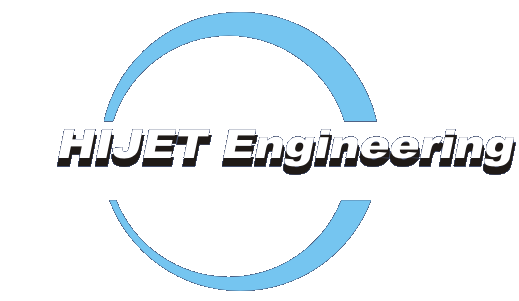| Q1: | What are the dimensions of the Hijectors ? |
Subject to application - Length : 5 to 35 ft ; Diameter : 2 to 50 in. |
| Q2: | How is the Hijector installed vertically or horizontally? |
No restriction for compression, Vertical for vacuum application. |
| Q3: | What are the materials of construction for the Hijector? |
Any material that can be machined : CS, SS, Hastelloy etc. |
| Q4: | Do you have problems with erosion in the Hijector? |
No, the fluid is filtered. |
| Q5: | What type of motive liquid can I use for my application? |
Depends on the application. Almost any liquid compatible with the process. For refinery vacuum applications LVGO is most common.
Compressors work with sour water MEA or DEA solutions. The latter reduce the H2S content in the feed gas. |
| Q6: | Which physical properties of the motive liquid have an impact on of the performance of Hijet System? |
Density, vapor pressure, viscosity, temperature. |
| Q7: | What kind of motive fluid data do you need? |
Component assay. |
| Q8: | What type of recirculation pump is used? |
Depends on application and customer preferences and can include General Industrial, ANSI, or API type pumps. |
| Q9: | What is the typical head and flow of the pump? |
Head : 30 to 3000 psi ; Flow : 30 to 4000 gpm. |
| Q10: | How sensitive is the Hijector performance with changes in the discharge pressure on the pump? |
Qualitatively, increasing discharge pressure of the pump while the flow rate is constant causes an increase of Hijector´s discharge pressure. |
| Q11: | At what liquid and flow rate will a Hijector start compression? |
In principle, a Hijector starts compression when supersonic flow is attained and a compression shock
is formed in the channel throat. With a pump performing at its design pressure/flow, the Hijector shall start compression virtually instantly. |
| Q12: | I know the MW of my feed gas, is that sufficient to size a Hijector? |
No, composition is also needed to determine vapor and liquid equilibrium. |
| Q13: | My installation would be subject to gas flows with varying molecular weights.
Are Hijectors sensitive to varying MW of inlet gas? |
In general, Hijector´s volumetric gas capacity has low sensitivity to MW of suction gas.
It becomes sensitive to variation of inlet gas MW only when suction gas load is near the Hijector´s max design capacity. |
| Q14: | How do you control the inlet gas pressure and feed gas rate? |
By inlet control valve. |
| Q15: | How do you control the discharge gas pressure? |
No control. Discharge pressure set by Hijector design. |
| Q16: | What interlocks or controls are necessary to protect the Hijet System? |
Temp, pressure and level switches to shut down the pump. |
| Q17: | Should I use an air-cooled or water-cooled exchanger? |
Client preference. |
| Q18: | Should I put the cooler before or after the pump? |
Preferably before the pump if there is no NPSH problem. |
| Q19: | Do I need a three-phase or a two-phase separator? |
Depending on application. |
| Q20: | Do I need a vertical or a horizontal separator? |
Preferably horizontal but vertical for 2 phase. |
| Q21: | Do I need a one-stage or a two-stage Hijet System? |
Depends on the application requirements. |
| Q22: | What is the anticipated level of vibration in the Hijet System,
and any recommendations to mitigate. | Significant vibrations are not observed when the Hijector is in normal operation mode therefore
no special means are required to reduce vibration. |
